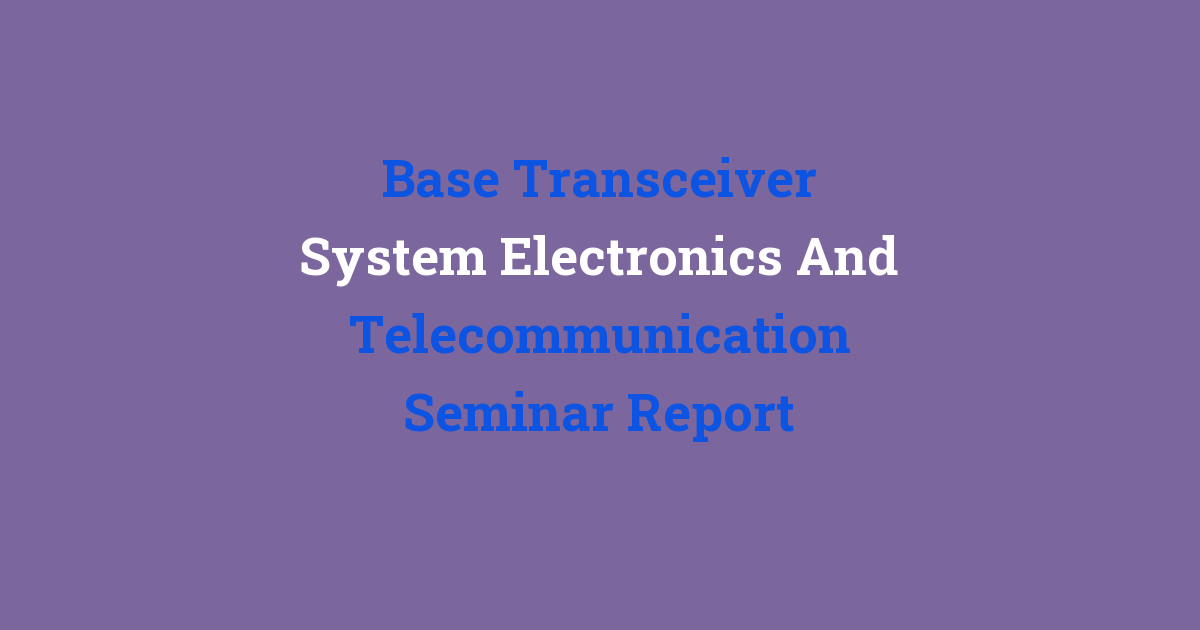Seminar report on electronics and telecommunication of base transceiver system technology.
Introduction
The Base Transceiver System (BTS) is a fundamental component of cellular networks, serving as the interface between mobile devices and the network infrastructure. In the field of Electronics and Telecommunication, the BTS plays a vital role in ensuring seamless communication between users.
Problem Statement
The existing BTS systems may face challenges such as limited coverage, signal interference, and capacity constraints. These issues can lead to dropped calls, slow data speeds, and overall degraded user experience. As technology evolves and user demands increase, there is a need for an improved BTS system that can address these challenges effectively.
Existing System
The current BTS systems are typically comprised of a combination of hardware and software components, including transceivers, antennas, power supplies, and control units. These systems operate within specific frequency bands and communicate with mobile devices using various modulation techniques.
Despite their functionality, existing BTS systems have limitations in terms of coverage, capacity, and reliability. In densely populated areas or remote locations, these systems may struggle to provide adequate service quality, leading to dropped calls or slow data speeds.
Disadvantages
Some of the disadvantages of the existing BTS systems include:
- Limited coverage in rural or remote areas
- Interference from other nearby BTS systems
- Capacity constraints during peak usage hours
- High energy consumption and operational costs
Proposed System
The proposed BTS system aims to address the shortcomings of the existing systems by leveraging advanced technologies such as software-defined networking (SDN), massive MIMO (Multiple Input Multiple Output), and beamforming. By incorporating these features, the new system can enhance coverage, increase capacity, and improve overall performance.
Advantages
Some of the key advantages of the proposed BTS system include:
- Improved coverage in rural and remote areas
- Reduced interference through advanced signal processing techniques
- Increased capacity to accommodate growing user demands
- Lower energy consumption and operational costs
Features
The new BTS system will include the following features:
- Software-defined networking for dynamic resource allocation
- Massive MIMO technology for increased signal strength and capacity
- Beamforming for targeted signal transmission and reception
- Advanced antenna design for improved coverage and reliability
Conclusion
In conclusion, the Base Transceiver System is a critical component of modern telecommunications networks, facilitating seamless communication between mobile devices and the network infrastructure. By addressing the limitations of the existing systems and leveraging advanced technologies, the proposed BTS system has the potential to revolutionize the way we connect and communicate.

